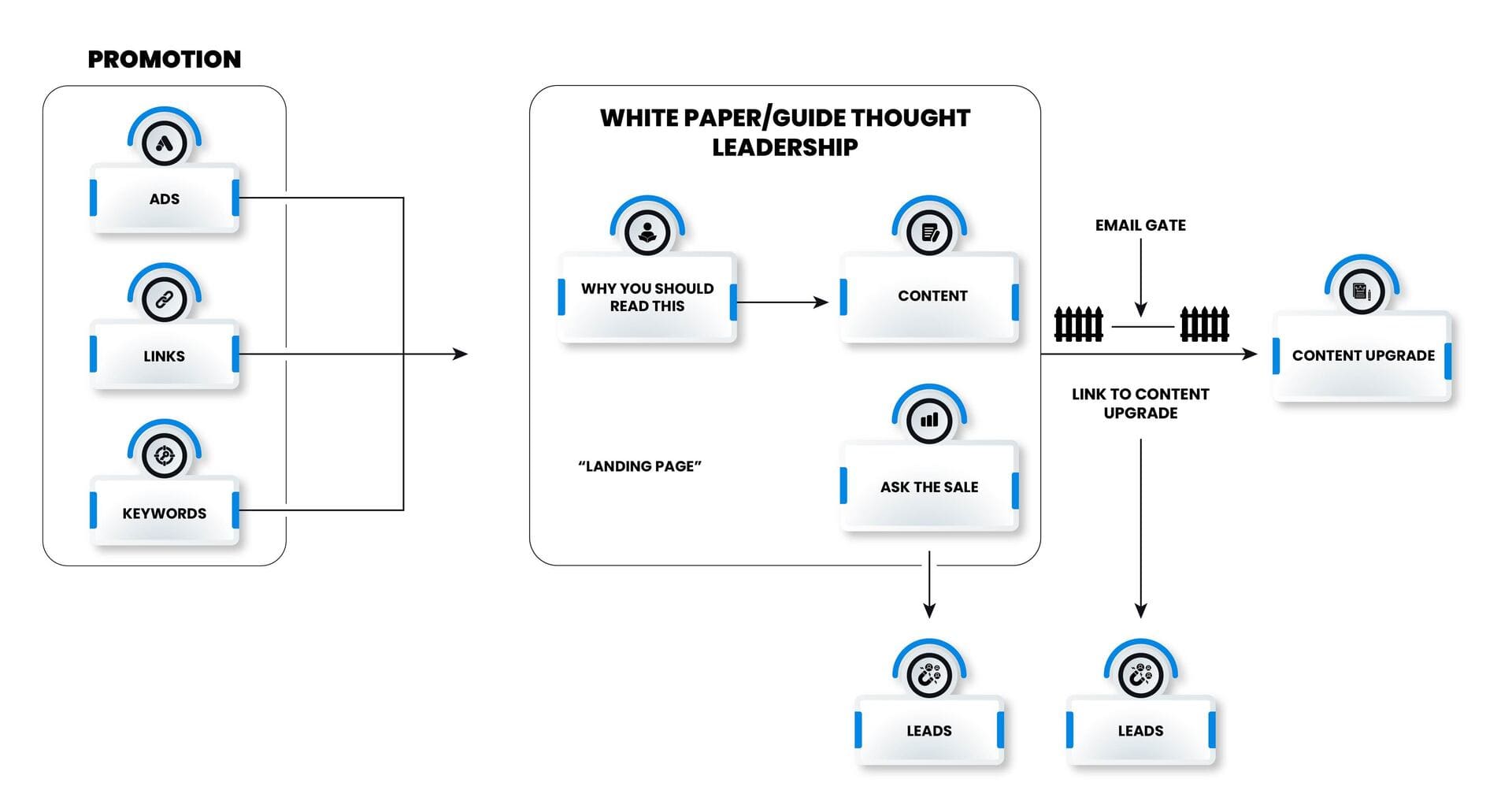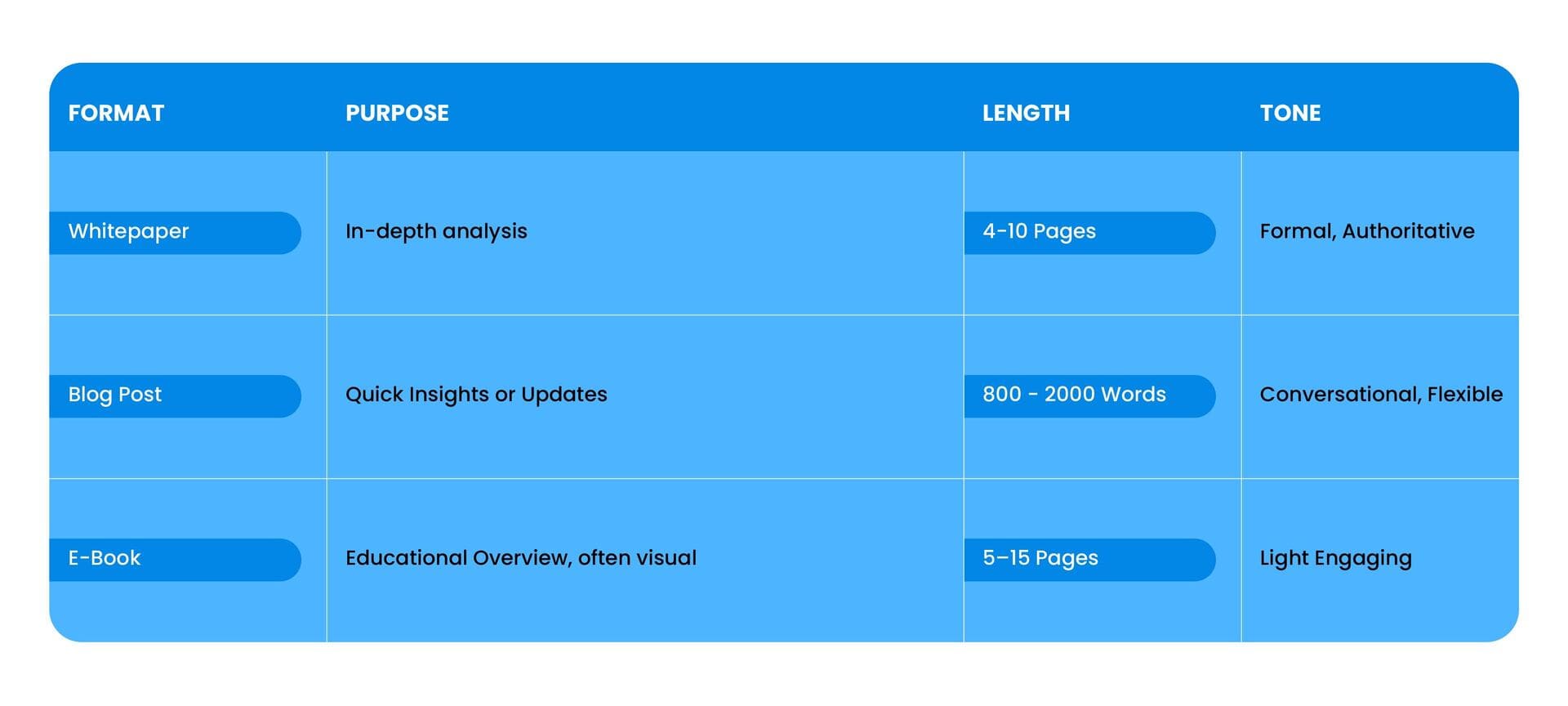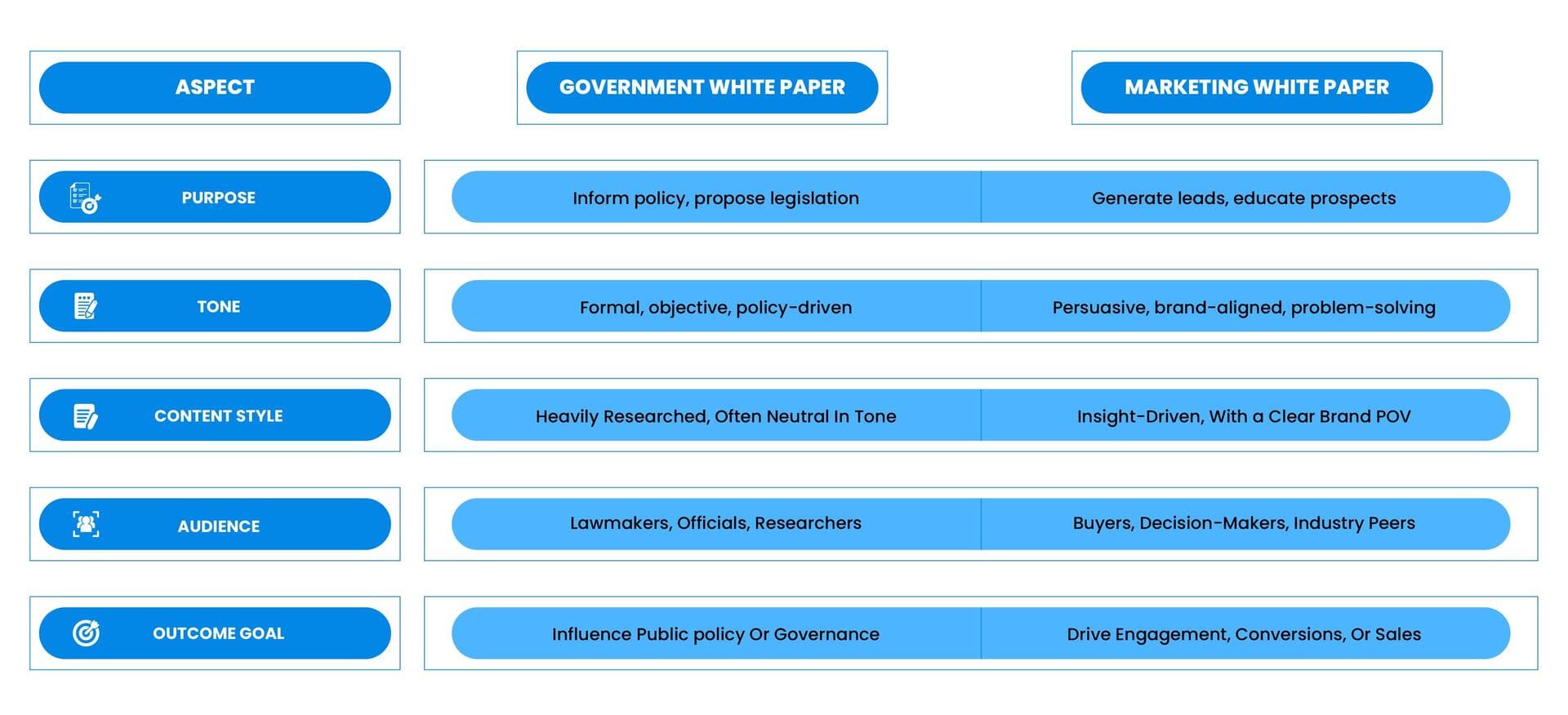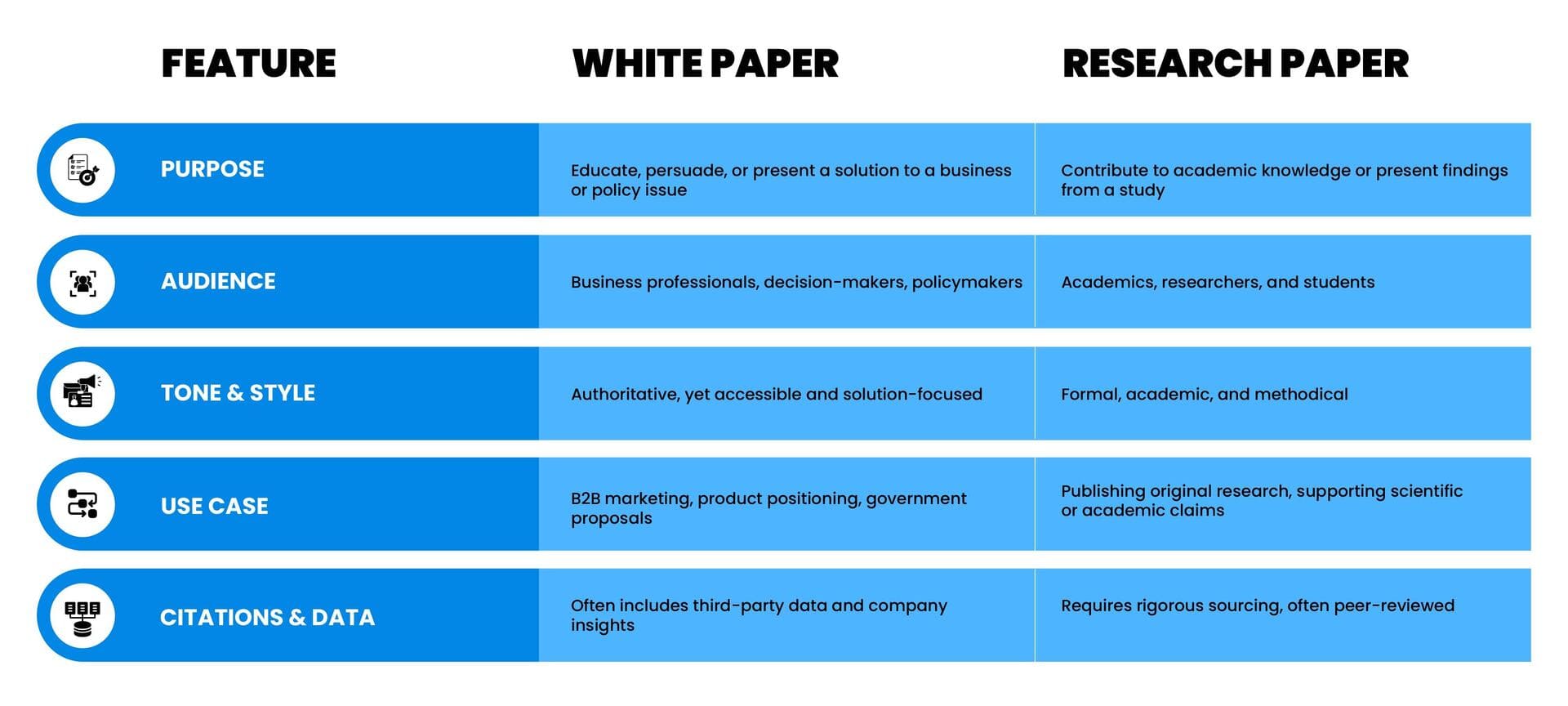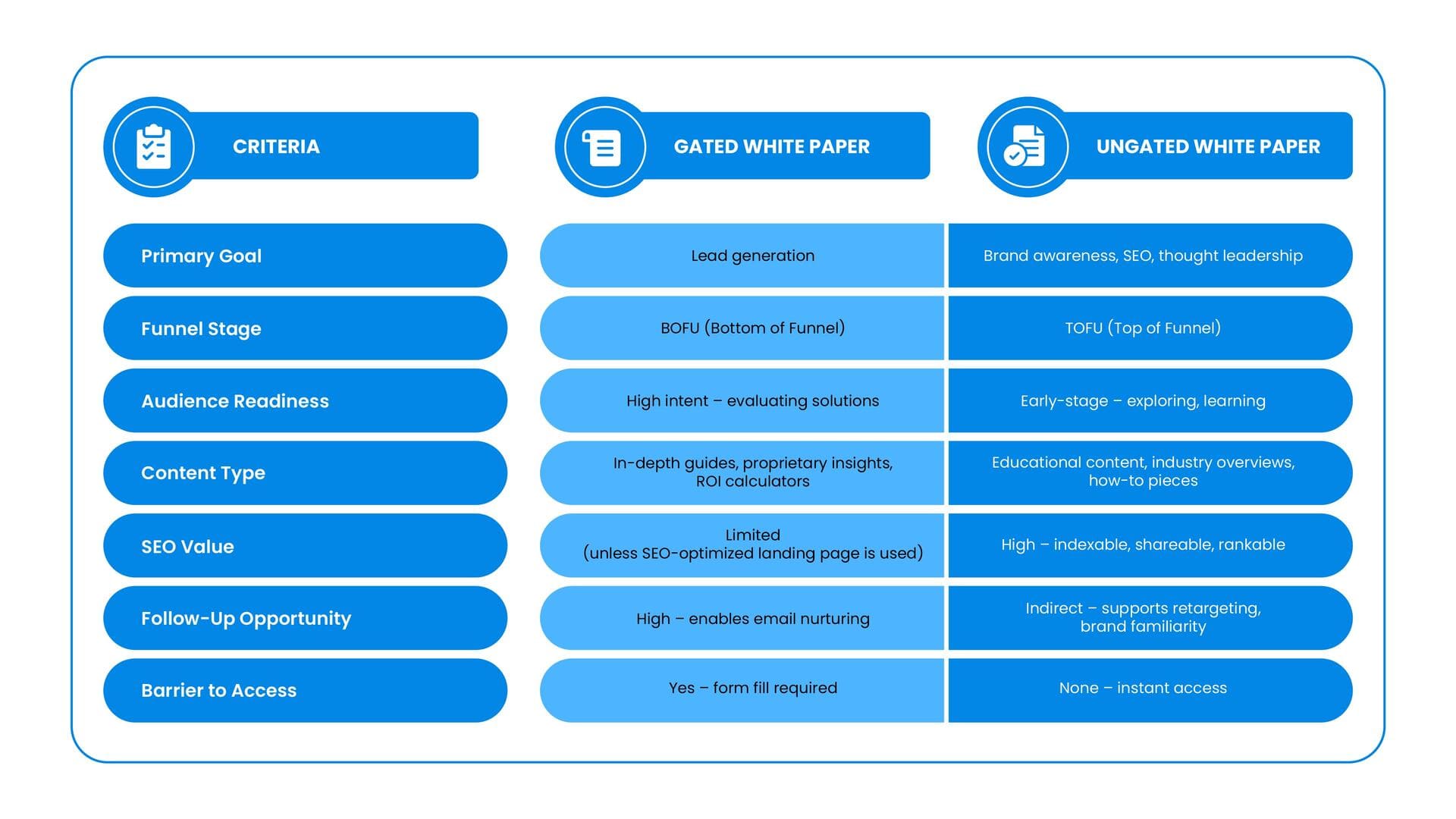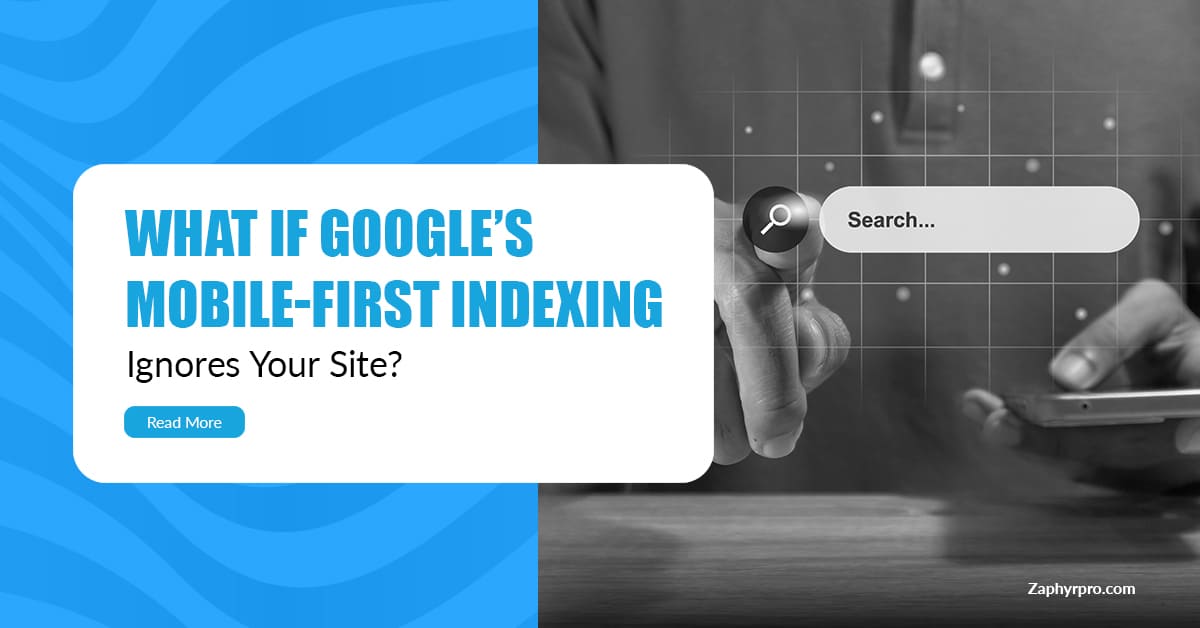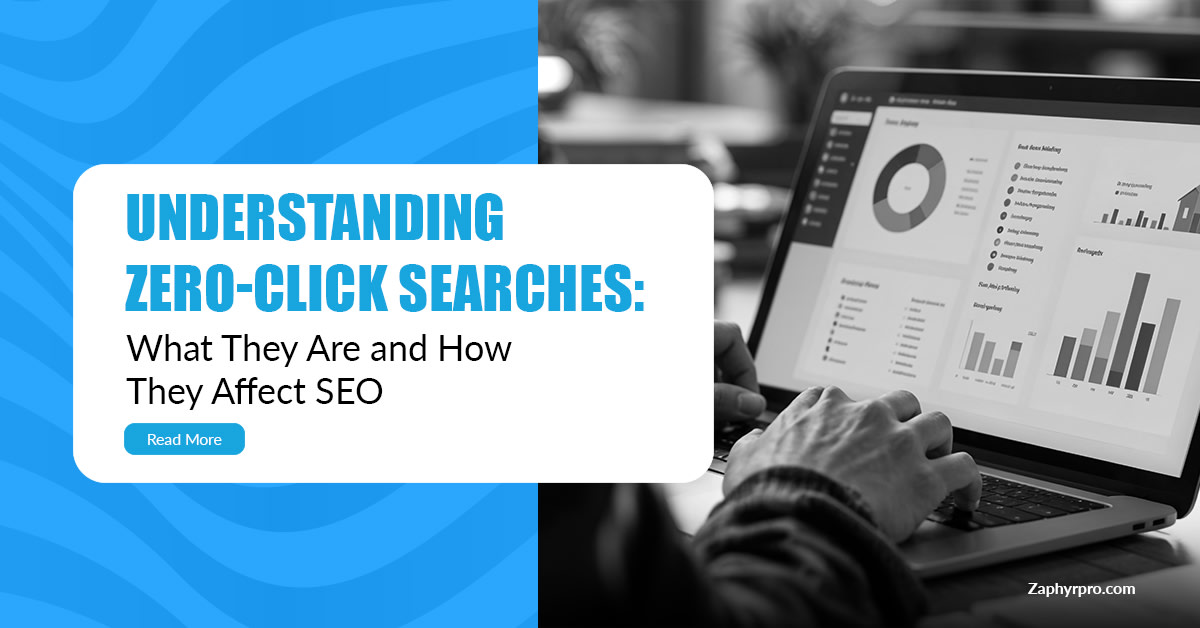In today’s endless scroll of social posts, quick-take articles, and AI-generated content, white papers are considered a goldmine of in-depth insights. They’re the substantial, research-backed documents that industry professionals STILL turn to when making important decisions.
But are white papers still a thing in 2025? ABSOLUTELY… and for good reason.
40% of marketers consider white papers "very effective" for SEO, thanks to their in-depth content and keyword-rich nature.
At its core, it remains what it’s always been, an authoritative, in-depth exploration of a challenge, solution, or industry trend. What’s changed is how we package them, share them, and measure their impact.
Interestingly, the Content Marketing Institute shared that, videos, case studies, and e-books were the most effective B2B content formats
This brings us to the million-dollar question I hear from marketers all the time: Should you put your white paper behind a form (gated) or make it freely available (ungated)?
Fair enough, I’ve been in the trenches with both approaches, and here’s what I’ve learned…
Sometimes it makes sense to keep your content behind a form to collect leads. Other times, you’ll get more value by letting it flow freely to build trust and visibility.
Let’s break down when to gate, when to go open, and how to make both work, whether your goal is B2B lead generation, brand authority, or both.
What Is a White Paper?
To put simply, white papers are long-form content assets that help businesses and institutions explain complex concepts in a clear, structured way. They’re especially useful when buyers are evaluating options and need credible, in-depth information to guide their thinking.
While blog posts are great for visibility and casual engagement, and eBooks often serve as easy-to-read introductions, white papers are designed to go deeper. They’re most effective when readers are closer to making a decision and need data, logic, or expert perspectives to back up their choices.
Where You'll Actually See White Papers
In B2B marketing, white papers are often used to:
- Present new research or frameworks
- Explain how a product solves a specific challenge
- Support lead generation in longer sales cycles
A government white paper is a policy document that outlines proposals or positions on key issues. Similarly, in parliamentary contexts, a white paper may be used to test reactions to potential policy before introducing formal legislation.
So whether it’s a marketing white paper pulling in qualified leads or a parliamentary white paper laying groundwork for national policy, they’re all about delivering substance and guiding decisions through genuine expertise.
What Are the Types of White Papers
While all white papers aim to inform and influence, they come in different formats. Choosing the right type of white paper can impact how well your content performs.
So, what are examples of white papers? Let’s explore the most common types.
1. Problem/Solution White Papers
These identify a specific pain point, then walk readers through a solution – usually connecting to your product or service.
Best for: Lead generation, solution awareness, middle-to-bottom of the funnel
2. Numbered Lists and “How-To” White Papers
These are more structured and digestible, making them ideal for top-of-funnel education or content repurposing. They’re also sometimes called listicles in long-form format.
Best for: SEO, awareness, content marketing campaigns
3. Backgrounders
Backgrounders provide deep, often technical explanations, perfect for showcasing product functionality, tech infrastructure, or a scientific framework. They’re typically used to support RFPs, vendor comparisons, or technical due diligence.
Best for: Technical buyers, product launches, partner education
4. eBook-Style White Papers
Sometimes structured more visually and lightly than traditional white papers, these are designed for lead capture and are often shared as downloadable resources — making them ideal for content marketing.
Best for: Email capture, lead nurturing, evergreen content
5. Government White Papers
In public policy, a white paper presents legislative proposals or regulatory frameworks for feedback before formal implementation.
Best for: Transparency, stakeholder engagement, shaping public policy
If you’re developing a problem-solution white paper, a how-to guide, or a policy proposal, or pushing for change? Shape it to fit.
So next time someone asks, “What are examples of white papers?” or “Where can I find a list of white papers?” Now you’ve got a clear answer, and a few great ones to share. 🙂
White Paper vs. Research Paper: Key Differences
It’s easy to confuse white papers with research papers — after all, both are long-form, data-driven, and focused on informing the reader. But their purpose, tone, and intended audience differ significantly.
So, what is the difference between a white paper and a research paper?
Here’s a simple comparison to help clarify:
Unlike research papers that stick to presenting facts and findings, white papers combine expertise with persuasion.
On top of that, they interpret those facts to help the reader take action, if it’s for adopting a new strategy, considering a solution, or rethinking an approach.
For example:
- A cybersecurity firm might publish a white paper showing how mid-market companies can reduce breach risks using a specific security model.
- A government agency might release a white paper to introduce and justify a proposed policy change before drafting legislation.
In both cases, the white paper lets the author speak with authority. That’s something a traditional research paper usually stays away from.
The Role of White Papers in Modern B2B Marketing
In B2B (business-to-business) marketing, marketing white papers are a big deal because they do so much more than just inform.
In short, white papers in marketing are powerful tools for connecting with other businesses. Whether it’s nurturing leads, targeting special clients with ABM, boosting SEO, or building trust.
Let’s break down HOW brands use content marketing white papers today to grow their business and build their trust.
Lead Nurturing
When someone shows interest in a company (like downloading a free guide), a white paper steps in to keep the conversation going. It gives them valuable info, like tips or solutions, that makes them trust the brand more. Over time, this helps turn curious visitors into loyal customers.
ABM (Account-Based Marketing)
With Account-Based Marketing, or ABM, companies focus on specific businesses they really want to work with. Marketing white papers are awesome here because they can be used to speak directly to those businesses’ needs.
For example, a tech company might create a white paper about cybersecurity just for a big client who’s worried about data breaches. It’s personal, and it shows the brand gets them.
SEO Visibility
Want to be found on Google? Content marketing white papers can help! When companies write white papers packed with useful info and sprinkle in popular search terms (like “best marketing strategies” or “how to boost sales”), they can rank higher on search engines.
Trust-Building
Nobody likes a know-it-all, but everyone loves a helpful expert. White papers let brands show off their smarts in a way that feels genuine. By diving deep into a topic (like how to solve a common industry problem) they prove they know their stuff. This builds trust with readers, who start to see the brand as a go-to source for advice.
Gated or Ungated? How to Decide for Your B2B Campaign
When it comes to white papers, gating vs. ungating isn’t a one-size-fits-all decision. The right choice depends on your goal, your audience’s intent, and how the asset fits into your broader marketing strategy.
To help you decide, use the matrix below to align your content type with your campaign priorities:
Quick Checklist to Choose the Right Format
- Are you targeting a high-intent audience ready to take the next step? → Gate it.
- Do you want to drive traffic and improve your search rankings? → Keep it open.
- Is this content exclusive, data-rich, or highly valuable? → Gate it.
- Are you building top-of-funnel awareness or launching a new content hub? → Ungate it.
Want the best of both worlds? → Consider hybrid formats (e.g., ungated overview + gated full report).
Ready to supercharge your sales pipeline?
Still unsure? We help clients create white papers that both rank and convert, ALL WHILE combining strategy, storytelling, and SEO to get the best of both worlds. Let’s talk about what format fits your funnel.
Learn MoreHow to Write a White Paper That Performs
If you’ve ever searched how to write a white paper, you’ve probably noticed there’s no shortage of advice — some of it helpful, much of it overly complex.
Let’s break it down into a simple, repeatable writing framework that works whether you’re writing for marketing, internal strategy, or executive decision-making.
1. Know Your Audience Before You Write a Word
Before drafting a single sentence, ask yourself:
- Who is this for?
- What do they already know?
- What do they still need to understand before they act?
Your tone, depth, and examples should all reflect the audience’s level of expertise and business role. A white paper for a CFO will sound very different than one for an IT manager, and that’s intentional.
2. Outline First (Structure Is Everything)
A white paper isn’t a blog post. It needs a logical flow that walks the reader through:
- The problem or context
- The analysis or research
- The solution or insight
- The implication or next step
Outlining helps avoid rambling, keeps your argument focused, and ensures your content delivers on its promise.
3. Back Your Claims with Data and Credible Sources
White papers earn trust through substance. Whether you’re presenting original research or making an industry claim, cite your sources.
Use:
- Third-party data (Statista, Gartner, McKinsey, etc.)
- Internal findings from case studies or surveys
- Expert quotes or firsthand insights
If you don’t have the data yourself, link to it. Google — and your readers — appreciate transparency.
4. Keep the Tone Educational and Human
Yes, white papers are serious business documents, but that doesn’t mean they have to sound robotic. Avoid jargon and overly formal language. Instead, write like an expert explaining something clearly to a peer. Think informed, not intimidating.
5. Design and Distribute It Smartly
How your white paper looks is just as important as how it reads.
Good design:
- Breaks up text with visuals or callouts
- Uses charts to highlight data
- Aligns with your brand without overwhelming the reader
Distribution matters too.
You can:
- Upload a PDF to a gated landing page for lead gen
- Publish it as an ungated blog series for SEO
- Convert it into a slide deck, webinar, or infographic for multichannel use
Want to skip the blank page? There are plenty of tools and templates out there. Try:
If you’re serious about writing white papers that generate leads and earn trust, consider partnering with a white paper writing service. Whether you need help with research, writing, or formatting, a specialized team can make the process smoother and the final product stronger.
A Smarter White Paper Strategy Starts with the Right Format
Not every white paper needs a form. Some are better off out in the open, grabbing attention far and wide, while others work best behind a gate to snag leads.
It all comes down to picking the right setup, gated, ungated, or a mix based on what you’re aiming for and who you’re trying to reach. Get that right, and you’re set to make a real impact.
Want help figuring out or writing your next white paper? Zaphyre got your back, whether you go gated, ungated, or both, we’ll make it work and get results.
Frequently Asked Questions
A white paper is a detailed, authoritative document that identifies a specific business problem and presents a research-backed solution. It’s designed to educate readers and establish thought leadership rather than directly sell products. White papers help decision-makers evaluate solutions based on facts and analysis.
Yes. Despite the popularity of short-form content, white papers remain essential in B2B marketing for lead generation, SEO, and establishing credibility. They provide the depth decision-makers need when researching complex solutions or justifying significant investments.
The best format depends on your goals:
- PDF downloads for lead generation
- Web pages for SEO visibility
- Visual formats for improved engagement
All effective white papers include a clear title, executive summary, structured content, supporting visuals, and a logical conclusion.
White papers:
- Formal, data-driven content
- Target decision-makers
- Focus on specific problems and solutions
- More text-heavy and analytical
Ebooks:
- More conversational and visual
- Appeal to broader audiences
- Focus on education and awareness
- Use more design elements and illustrations
An effective white paper:
- Addresses a genuine audience problem
- Provides fresh, research-backed insights
- Uses clear structure with logical flow
- Incorporates relevant data visualizations
- Offers actionable conclusions
- Maintains professional tone without promotional language



